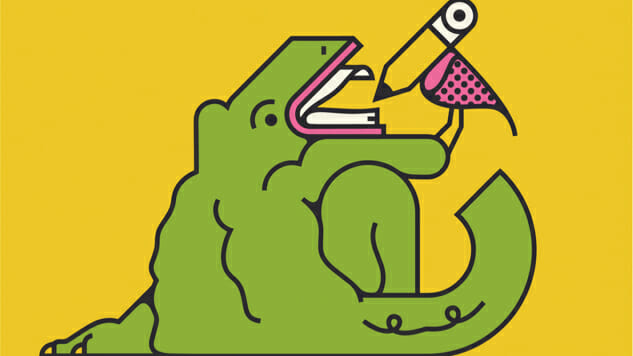Inside the Strange Symbiosis Between Independent Booksellers and Publishers
Illustration by Thomas Hedger Books Features the books
Note: This piece is in Paste Quarterly #1, which you can purchase here, along with its accompanying vinyl Paste sampler.
It may sound like a headline from The Onion, but the craziest thing about it is that it’s true: “Local bookseller buys out tech firm next door.” That’s how Anne Hollander describes what’s happening in Dallas, Texas, where Deep Vellum Books is set to expand into a neighboring space at some point in the next three months. Even crazier is that the bookstore is the successful outgrowth of a relatively new small publishing house.
“We’re the antithesis of all that doom and gloom,” says Hollander, Managing Director of Deep Vellum, about the death of bookstores and literary culture in the United States.
With only 13 titles published last year, Deep Vellum is a far cry from publishing behemoths Hachette, HarperCollins, Macmillan, Simon & Schuster, and Penguin Random House (aka the Big Five), which together accounted for 45 percent of all U.S. book sales in 2015, according to Nielsen data. But that number of titles makes it a part of a constellation of small, independent presses who are seeing rosy futures as the Big Five push further and further into producing mega-hits and bestsellers—and away from cultivating writers who might need to publish a few books before their “sales become representative of their real audience,” as Caroline Casey, the Managing Director of Coffee House Press, puts it.
“When you’re an independent publisher,” adds Casey, “you’re operating under book publishing margins. When you’re part of a conglomerate, your expectations of margin are very, very different. And that is limiting for your ability to invest long-term in writers.”
Of course, it’s impossible to talk about book sales without mentioning Amazon, whose annual revenues far surpass that of the biggest publishers combined. But while Amazon’s dominance of the book market poses an existential threat to both big publishers and Barnes & Noble, it doesn’t necessarily mean the same for small presses or even small stores. “Even if someone takes a photo of a book in our store and goes out and buys it on Amazon, we are still building a relationship with them,” says Hollander. “It’s not so much about where a customer [buys] any one book.” More importantly, they’re more likely to come back into the store.
If this raises your bookstore-loving eyebrow, it shouldn’t. “Before Amazon became the presence it is now and before the economy tanked, a lot of people were able to run stores without knowing how the business worked,” says Casey. “Lots of bookstores that are swinging and doing very well now, they understand what they offer the community and they get that they’re a business.”
The numbers bear out this assessment. While independent bookstores have dropped from 4,000 in the early 1990s to roughly 2,000 by 2014, independents have made a strong comeback from the financial crash in 2009, taking advantage of the financial woe at Barnes & Noble, which has closed hundreds of stores, and Borders Books, which went belly-up in 2011. In 2016, according to the most recent census data, sales at retail stores were up 3.6 percent from a year earlier.
While everyone has their favorite bookstore closure tear-jerker (my own involves Labyrinth Books in New Haven, Connecticut), it’s also true that Hollander and everyone else behind Deep Vellum Books are not alone. Literati Bookstore in Ann Arbor, Moon Palace Books in Minneapolis, and Parnassus Books in Nashville have all opened within the last five years—and all are set to expand.
“Independent booksellers are just really enthusiastic about books,” says Susannah Lawrence, director of publicity and social media at Akashic Books, a small publisher based in Brooklyn. “They want to talk about literature and the way that literature can shape and transform and inform. And they are better at doing that than an Amazon algorithm is.”